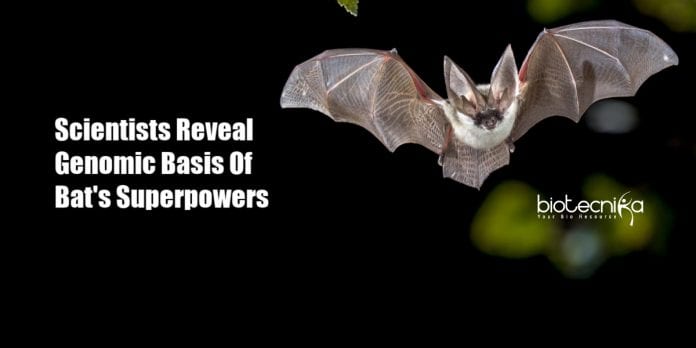Genetics Behind Bat’s Abilities Like Tolerance To Viruses Revealed
A paper published in Nature has revealed the genetic material responsible for the superpowers and adaptations of bats like their ability to move easily in complete darkness, the ability to fly, tolerate deadly viruses and resist cancer and aging. Liliana M. Dávalos, co-author of the paper and an evolutionary biologist at Stony Brook University, worked as a part of Bat1K, the executive committee of the global consortium of scientists to sequence the genome of six widely divergent living bat species.
The Bat1K bat sequence is ten fold more complete than any other genomes published before. The findings included the role of evolution through gene expansion and loss in a family of genes APOBEC3 in rendering immunity to viruses. The paper discusses details on why such genetic changes are only found in bats. Investigating this could help prevent viral diseases in mammals, especially in humans.
Scientists are discovering more and more evidence of the importance of gene duplications and losses in the evolution of new functions and features across the lifeforms. But if the genome is incomplete, it’s difficult to determine when the genes duplicated and even harder to understand if genes
have lost. With extremely high-quality genomes, the changes in gene families can be clearly understood, which is otherwise not quite possible.Genetics Behind Bat’s Abilities
The newest technologies of the DRESDEN-concept Genome Center were used by the team to generate the bat genome sequence. The pieces of DNA sequences were assembled in the correct order using new methods to identify the genes present. Although previous studies had identified genes that potentially contribute to the unique biology of bats, the incomplete genomes were not able to provide information on how gene duplications contributed to this unique biology.
To address the unresolved question of where bats are located within the mammalian tree of life, the team compared these bat genomes against 42 other mammals. Using comprehensive molecular data sets and novel phylogenetic methods, the team was able to find the strongest support for the close relationship between bats and a group called Fereuungulata that consists of carnivorans like cats, dogs, seals, whales, ungulates, and pangolins.
The team systematically searched for gene differences between bats and other mammals to unveil the genomic changes that contribute to the unique adaptations found in bats. They identified the loss and gain of genes in bats and the genomic regions that have evolved differently to give them unique traits. A series of sophisticated statistical analyses enabled scientists to understand the genetics behind the unique abilities of bats, including their ability to tolerate viruses.
The genome revealed evidence of surviving past viral infections and a higher diversity of these viral remnants are found in the genome of bats, compared to other species, suggesting their historical interactions with viruses. Besides ancient coral insertions, the genomes revealed the signatures of many other genetic elements, including transposable elements and ‘jumping genes.’






























